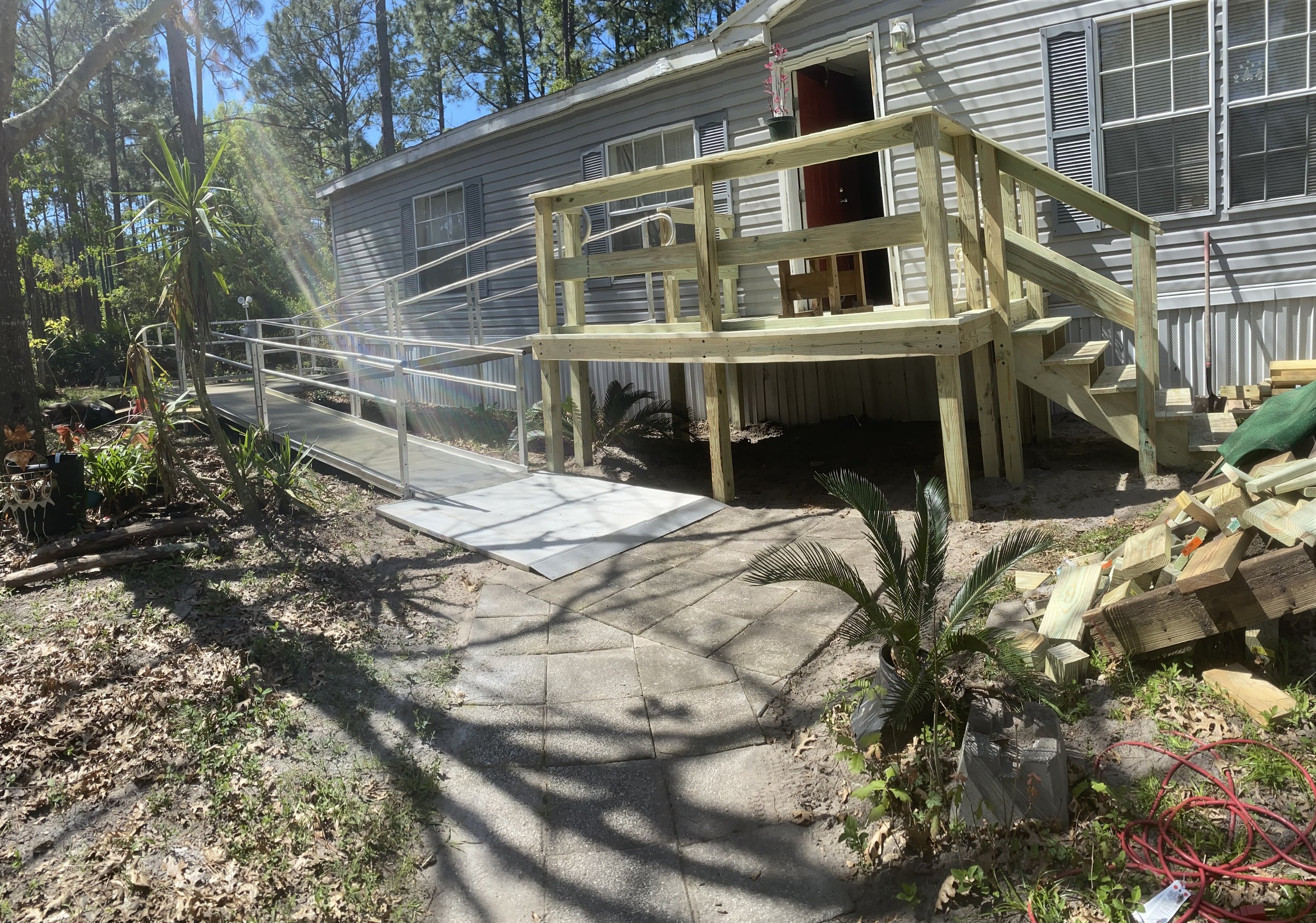
October 14, 2022
As we strive for more inclusivity in our communities and workplaces, it’s important to remember the needs of people with disabilities. Those who use powered wheelchairs due to paraplegia require certain accommodations to be able to navigate their environment safely and comfortably. This is especially important for a client to be able to enter and utilize their homes. In the case above, this gentleman was given a ramp, but the people who donated it, did not take the time to set it up properly.
One crucial aspect of this is having a proper ramp in place. Without a ramp, individuals with paraplegia may struggle to enter buildings, cross curbs, and navigate other obstacles that may be present in their daily lives. This can limit their independence and ability to participate fully in activities outside of their homes.
A proper ramp should be sturdy, wide enough to accommodate the wheelchair, and have a gentle slope that meets accessibility standards, which are typically 1 foot of run for every 1” of rise. It should also be free of obstacles, have a non-slip surface to prevent accidents and boards along the bottom to keep users from driving their powered wheelchairs off the edge. This is much different than if you were just building a ramp, in that case, a banister would suffice. Investing in a good quality ramp not only benefits individuals with paraplegia, but also creates a more inclusive environment for everyone.
As we work towards creating more accessible and inclusive communities, let’s not forget the importance of a proper ramp for those who rely on powered wheelchairs. By making these small changes, we can create a world that is more accommodating to people of all abilities.